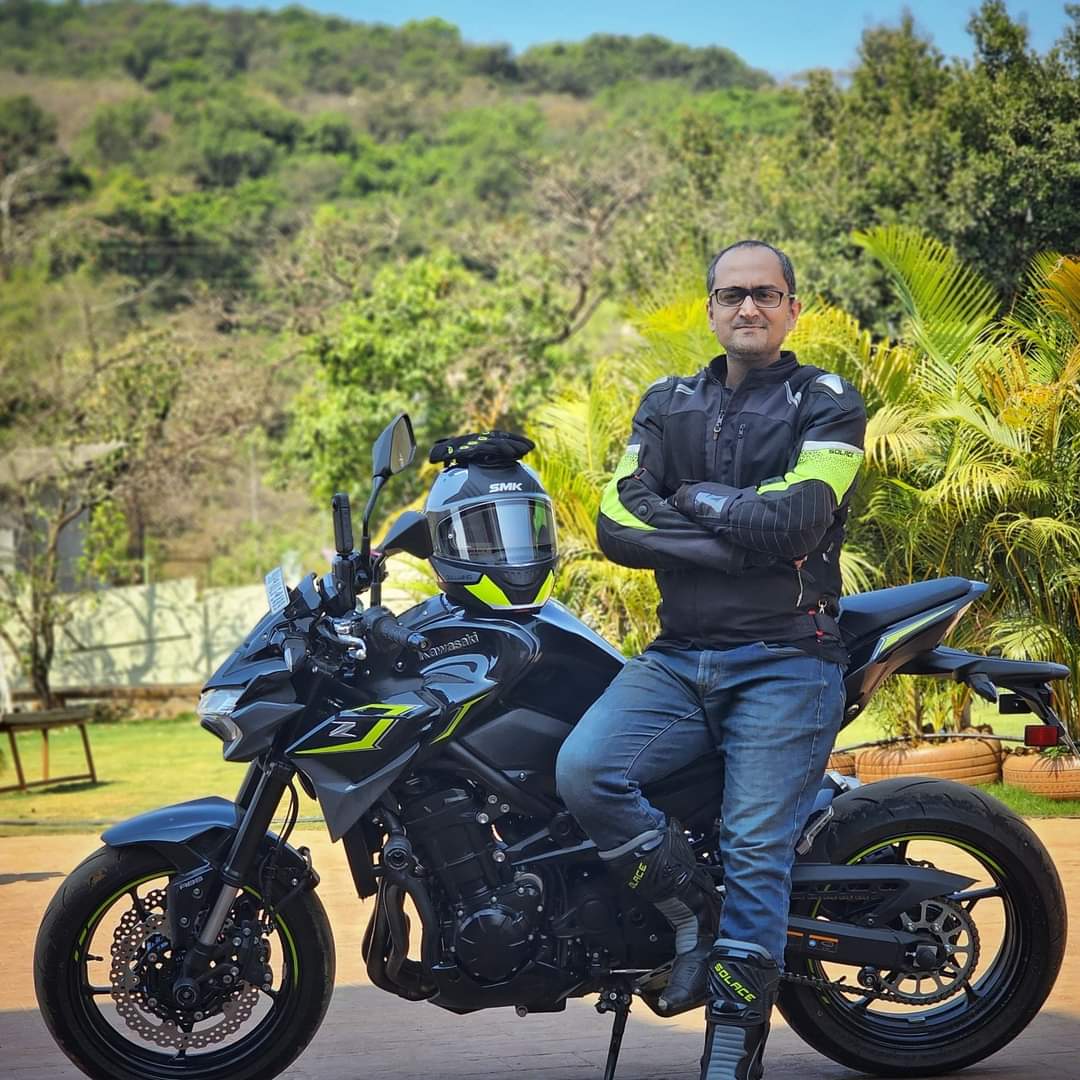Indian roads throw the worst at you when you least expect it — cows on blind turns, trucks reversing uphill, stray dogs mid-corner. Or an uncle on a scooter riding on the wrong side, one hand on the handlebar, the other holding a toddler. Not just city limits, but highways too.
That’s just Monday.
Keep going and you’ll see:
- Broken-down tractors parked in the fast lane
- Cattle sleeping under a flyover exit
- Water tankers taking blind turns wide like they’re in a Le Mans pit stop
- Wedding bands crossing highways with zero warning
- Cows, yes — but also bulls in rage mode
- Pedestrians deciding your lane is their shortcut
- A JCB without tail lights rolling backwards at dusk
- Random ropes across the road from “functions” happening on the side
- Kids sprinting for a runaway kite
New fear unlocked on a Sunday ride: A truck carrying loose bamboo sticks swaying on a blind left-hander — Final Destination vibes, and your face is front row. You don’t want to be in that movie.
No amount of riding skill matters if you’re entering a situation you can’t see coming.
That’s why visibility is your real speed limit.
In such a world, how fast is too fast isn’t decided by your bike’s capabilities or your skill — it’s decided by what you can see ahead.
1. Visibility Is Your Real Speed Limit
We’re conditioned to think the speed limit is what the signboard says or what the road “feels like it can handle.” That’s wrong.
The real speed limit is how far ahead you can see and react. If you’re riding faster than what your eyes and brain can process in case of an emergency, you’re gambling with your life.
- Blind turns? Back off.
If you can’t see around the corner, you have no idea what’s waiting. Drop speed, stay wide on entry, and trail brake if needed. - Night riding? Double caution.
Your headlight range is your stopping distance. Anything beyond it is unknown. Ride slower than you think you should.
2. You Suck at Judging Speed & Stopping Distance
Humans are terrible at estimating how long it takes to stop a bike from 100 km/h. Let’s face it — you look at the speedo, but your brain doesn’t compute what 40m of stopping distance really means until you’ve overshot something.
Here’s what can help:
- Practice emergency braking.
Do it on a safe, empty stretch. Get a feel for how long it really takes to stop from 60, 80, 100. Your brain learns only by doing. - Ride like you’re preparing to stop — not blast through.
Ask yourself, If something jumps out now, can I stop in time?
3. Twisties & Slopes? Low Gear, High Control
Twisties in India are double trouble — tight turns + the unexpected (broken roads, oil spills, buses on your lane). Here’s what works:
- Low gear, high RPM.
This gives you engine braking, quicker throttle response, and control. You feel the bike, and it responds cleanly. You’re not coasting. You’re riding. - Use engine braking actively.
Don’t just rely on your brakes. Downshift and brake before the corner, and you’ll feel planted and composed. - If the bike feels loose, you’re not in control.
If your line feels off, the front pushes wide, or the rear starts losing grip — you’re either coasting, in too high a gear, or riding beyond your skill.
4. You Control the Bike. Not the Other Way Round.
When you’re tense, reacting late, or relying too much on the brakes, the bike starts feeling like a wild horse. Fix it.
- Stay calm, eyes up, and predict.
Don’t ride target fixated. Look ahead, read traffic, anticipate bad behavior. - Ride your own ride.
Just because others are fast doesn’t mean you should be. Ego is a killer. Confidence is built through control, not speed.
Takeaway:
The safest rider isn’t the slowest — it’s the one who never puts themselves in a position where emergency reaction is their only option.
Visibility is the #1 rule. Ride only as fast as your eyes and brain can read. In India, that might mean crawling around blind corners or slowing on a perfect straight because you can’t see the far end. And that’s not cowardly — it’s survival.

This initiative is led by superbiker Suraj Naik, a passionate enthusiast of biking and DIY mechanics. If you’re as passionate about bikes, performance, and DIY tuning as I am, let’s stay connected!
I regularly share tuning insights, behind-the-scenes workshop work, and real talk about superbike life. Join the community and let’s keep the wrenching spirit alive. Check out my website https://bikersworkshop.com/ and join me on WhatsApp community and my social media channels by clicking on following links.
Leave a Reply
You must be logged in to post a comment.